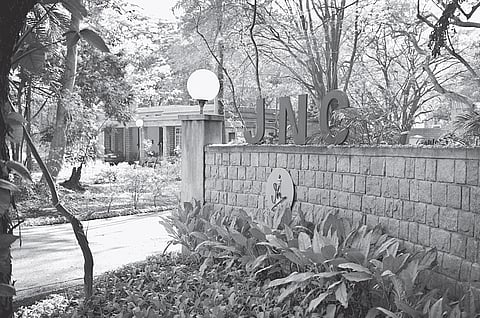

BENGALURU: Buildings at Jeevanbimanagar are stepped, with an open terrace attached to every apartment. Sky was an architectural element for its designer, the famous Charles Correa (1930-2015).
It is his open expansive spaces that draw people. Shoppers who have been to Koramangala’s Fab India store, which was Correa’s house, often say that they keep returning to it only to take in the ambience.
Correa was the architect who “always thought about the welfare of people who will be using the space – either for work or as residence,” according to Irena Murray, an architectural historian who spoke about the excellence of his work in the city recently.
The talk was titled ‘Before the Monsoon’, inspired by the architect’s impatience to transport a few sketches before the rains, and his foresight. In a quick chat with City Express, Murray spoke about Correa’s architectural philosophy and his work in the city.
What was his guiding philosophy?
He was a great humanist. He was not driven by beautiful buildings, but usable buildings that are more than just a shelter. He wanted the building to give the utmost comfort – whether it was to be used as a home or an office.
He believed in affordable housing...
Through affordable housing concept he aimed at providing homes for people who could not otherwise afford single homes. There are numerous such projects. An exhibition that will be opening in Mumbai on March 15 will show many that are still on paper. They can be used as models for affordable housing in any part of India. All of them are about incremental housing (to be increased later as required). The affordable housing that he designed can be replicated easily.
A bit about the house in Bengaluru?
The residential complex he built in Koramangala – which is now occupied by Fab India – is a beautiful example of mixing tradition with his philosophy. The building is inspired by the traditional Indian courtyard houses. To Correa, courtyards added a centre and also a contemplative element. That is the rule he tried to achieve in most of his buildings.
Another example is the Jawahar Kala Kendra, Jaipur, Rajasthan. It has a very strong empty space. Empty space was important for Correa since he thought it encourages contemplation.
When someone visits a cultural space to enjoy art, music, visual art or dance, they also tend to contemplate what it means – in their life and in lives of others.
There are many other homes he built, mostly in Koramangala and a few office spaces. He always tried to innovate, but he tried to keep to some of the elements he had inherited from traditional space, that gave the building a gravitas, centrality and a point of view.
What can an architect learn from Correa?
They should remember that they are not constructing the building for themselves, but for other people. Charles always cared deeply for the users of his building. Above all he cared deeply about people who needed shelter and affordable housing. He was aware of the fact that even though he could not resolve the housing problems in India, he could at least make suggestions and proposals and build things that serve as models for affordable housing.
Any architect who can replace Correa?
There are a lot of young and gifted architects in his own family. His daughter Nondita Correa-Mehrotra, actively participated in most of his projects.
When did you happen to meet Correa?
I met him at an expo in 2013 in Royal Institute of British Architects, London, which I curated. I kept talking to him even after he returned to India. The main connection between us was the drawings he gave us at the institute. He wanted his work to become a centre of discussion.
How was he as a person?
He was an impatient man. Everything for him was urgent. When he asked me to move his drawings from India to London, he told me that I had to do it before the monsoon. I did not understand why the season was so important, but it dawned on me that it was not a good idea to move 6,000 paper drawings in the middle of the monsoon in India. That is what inspired the title of this talk.